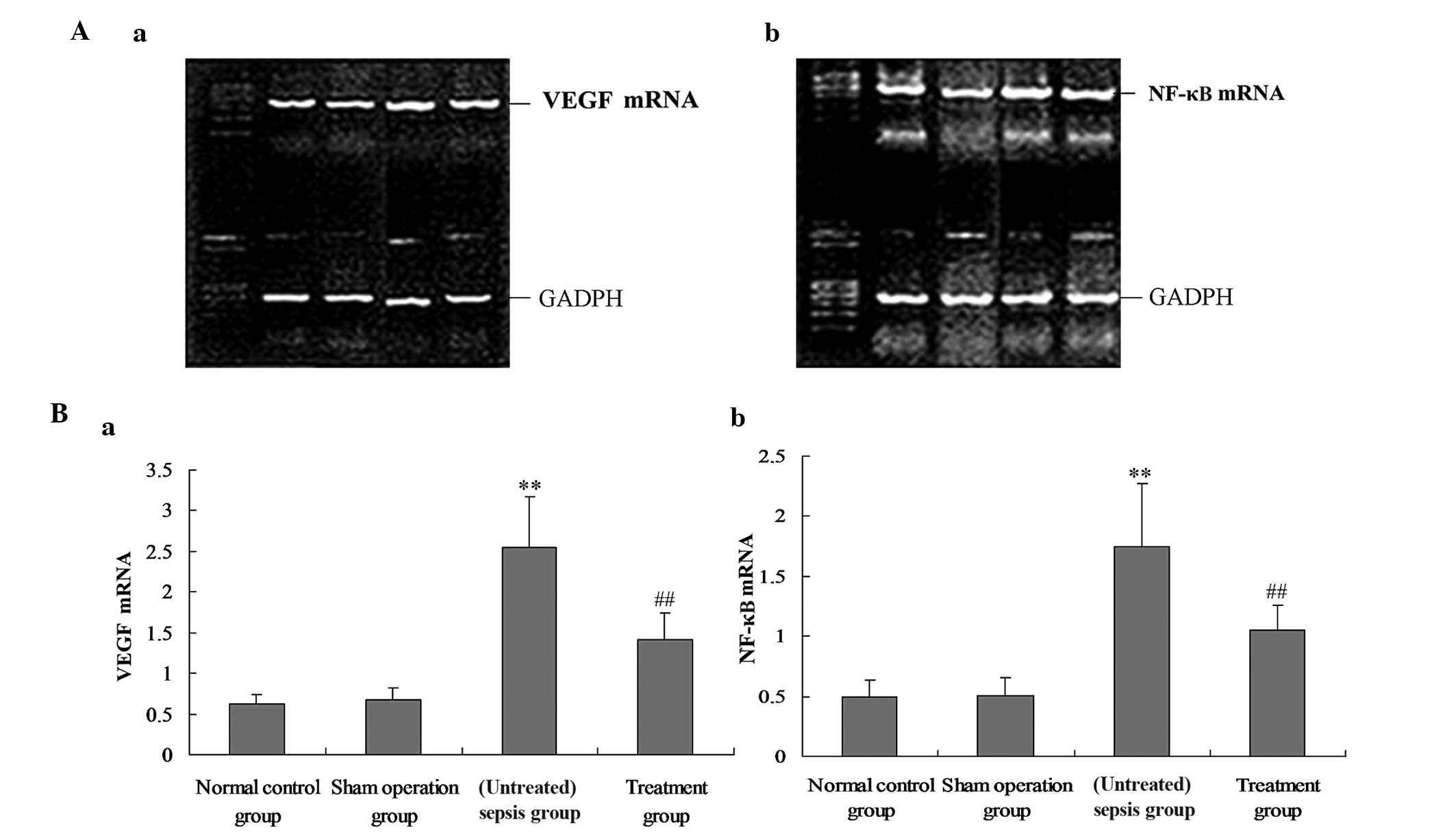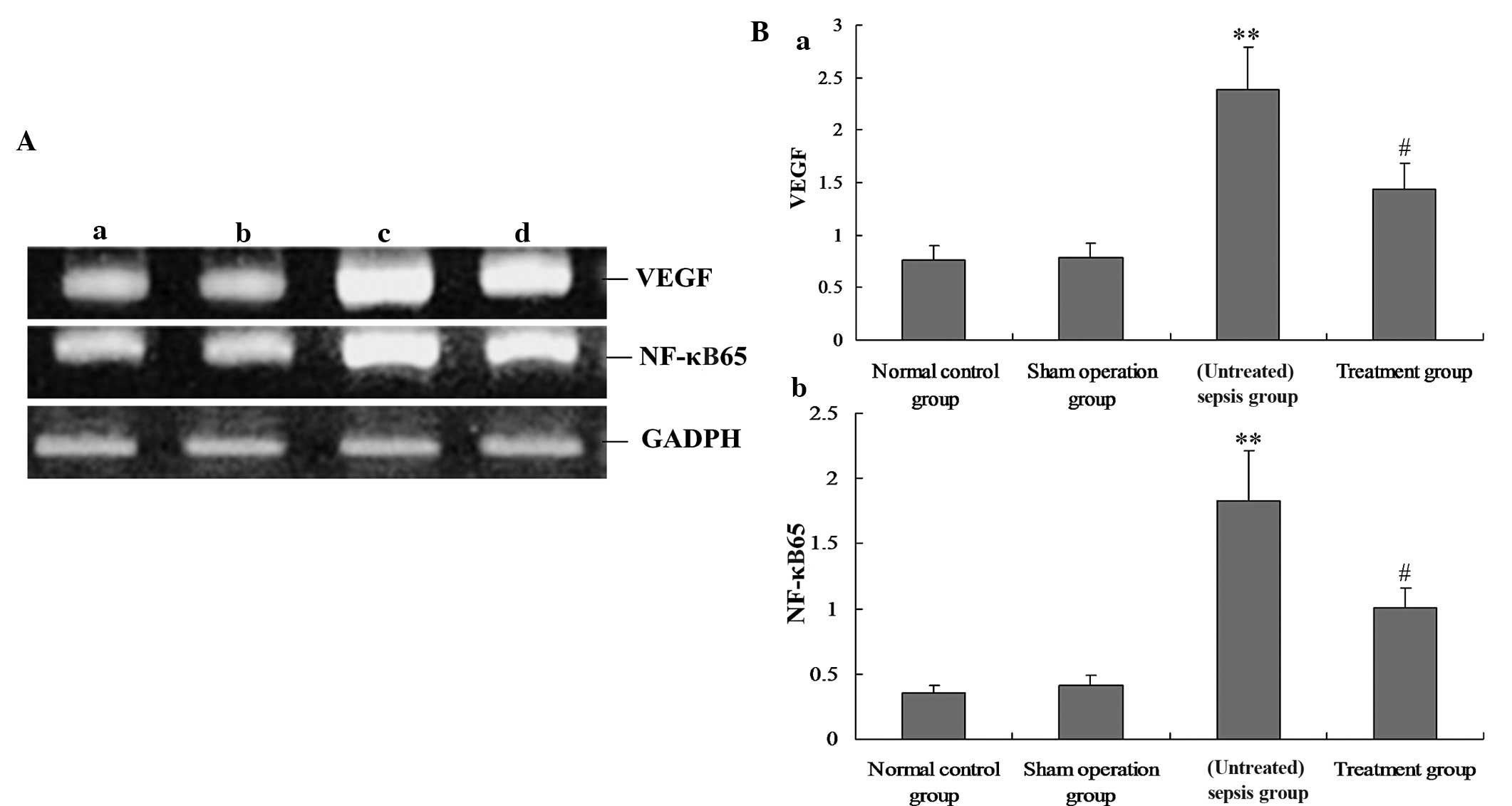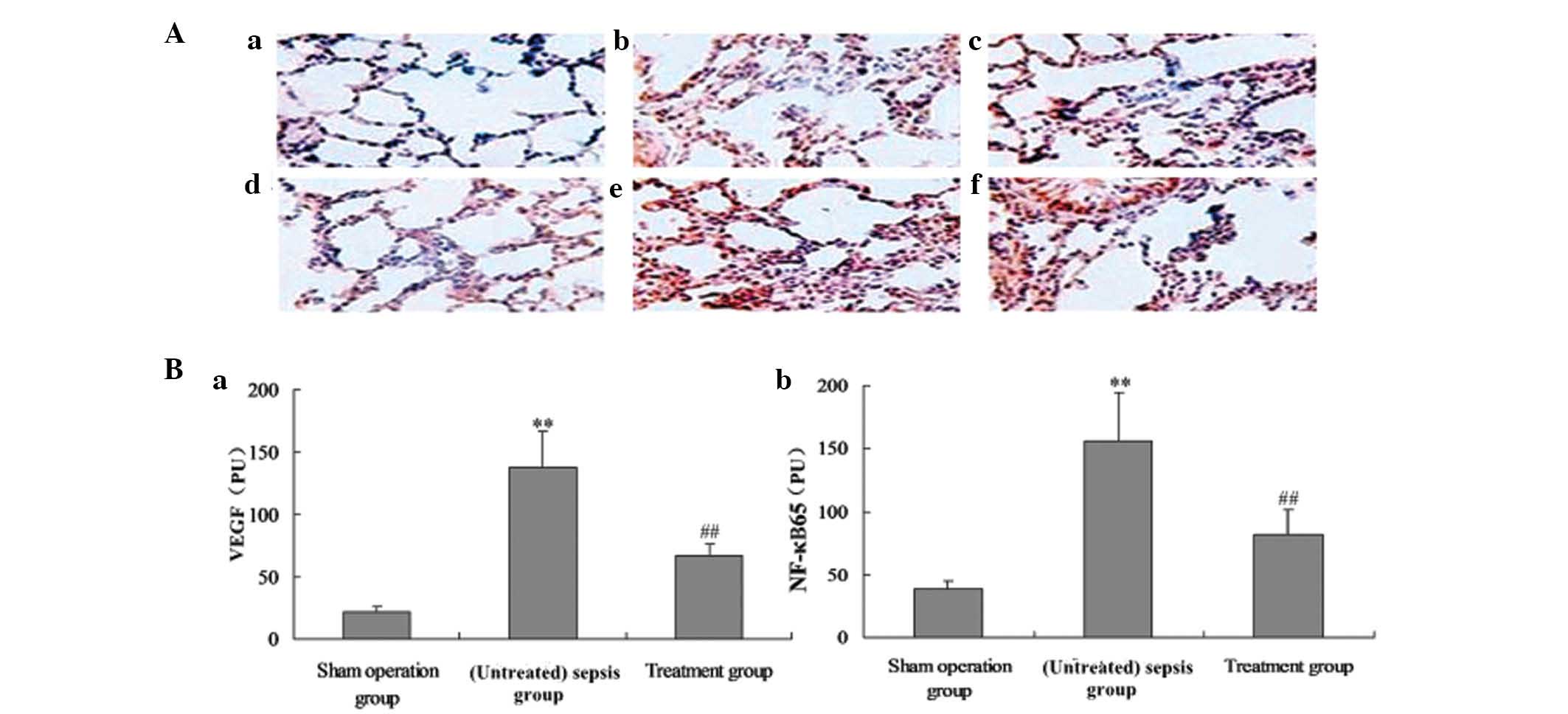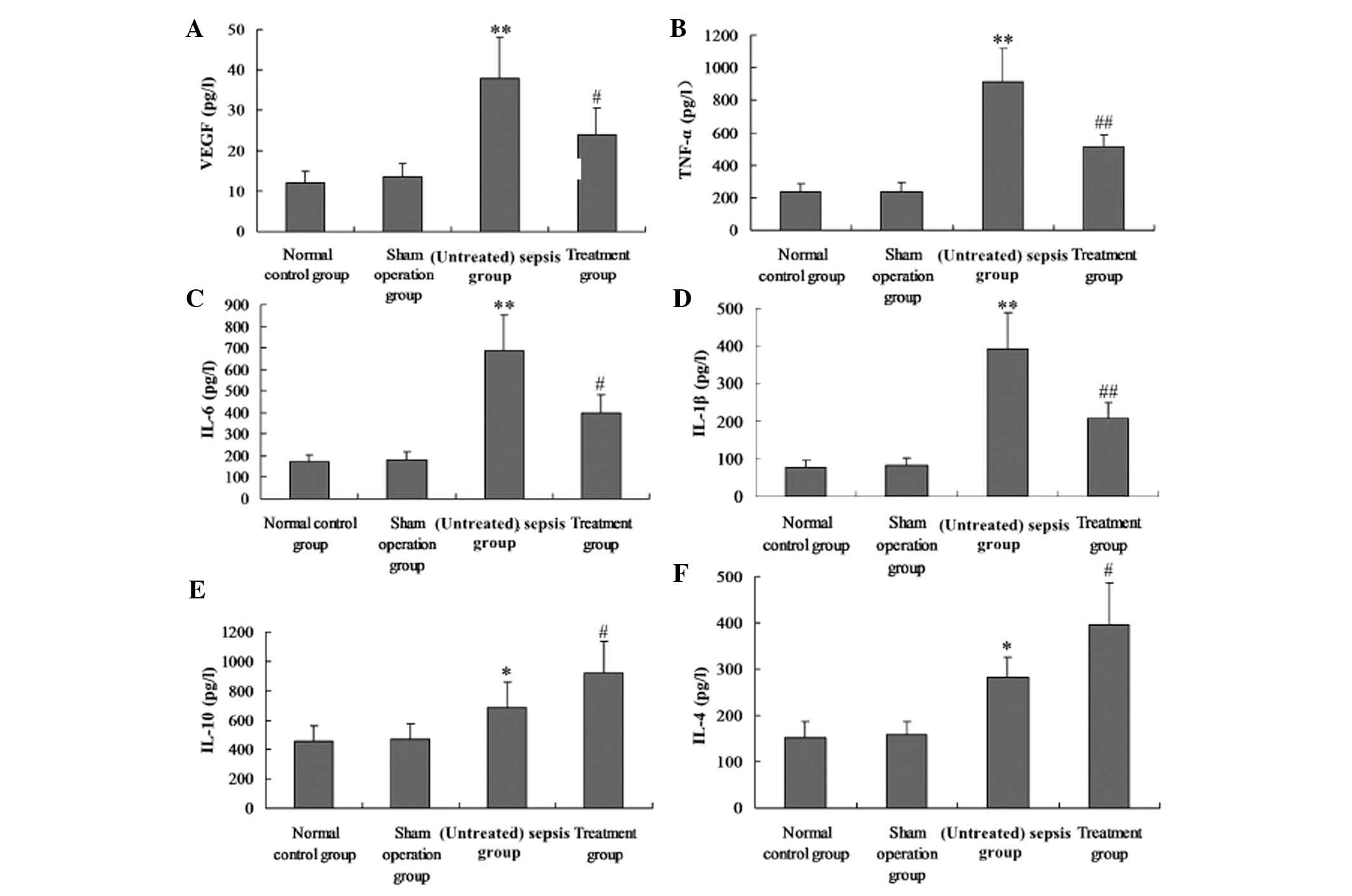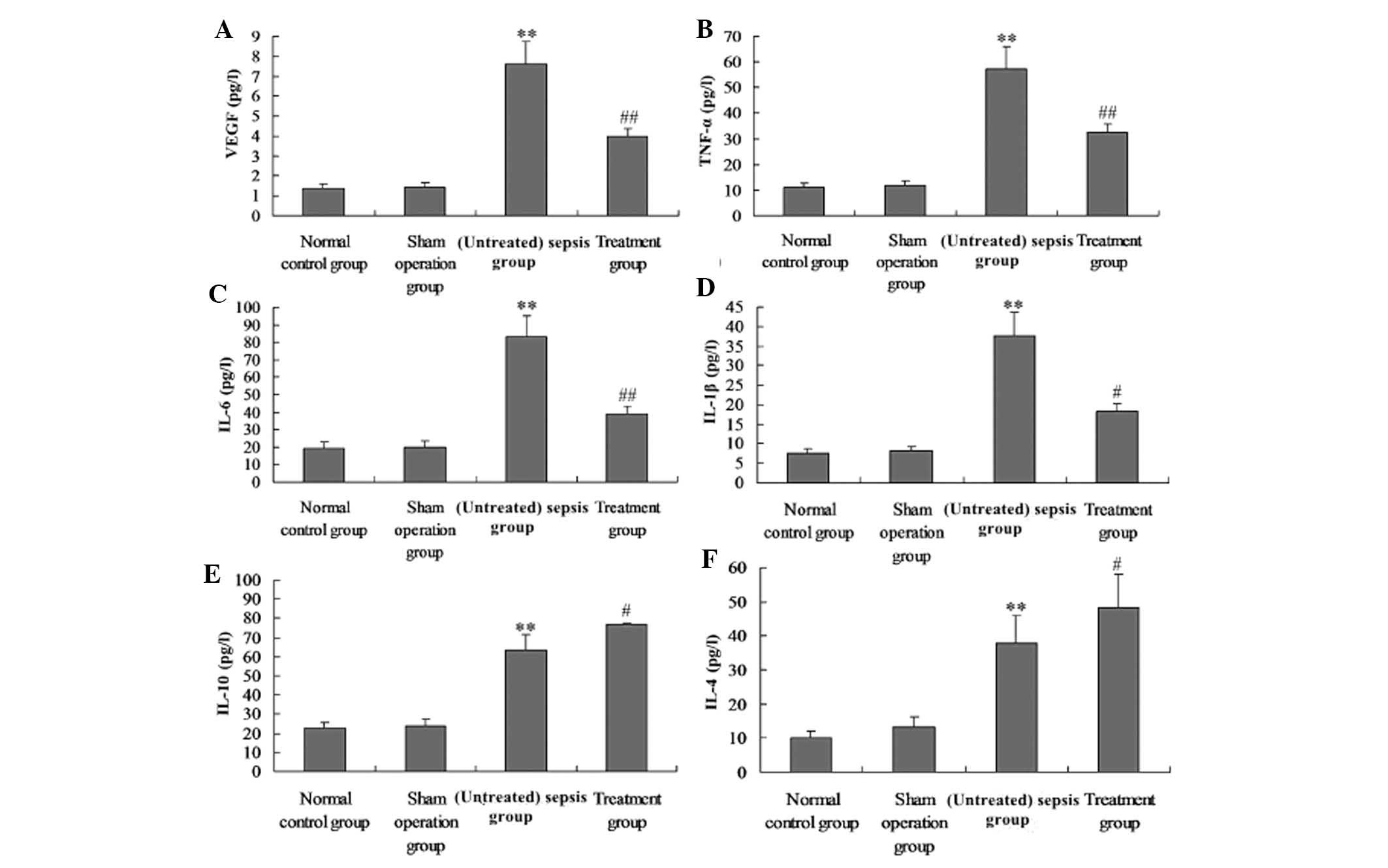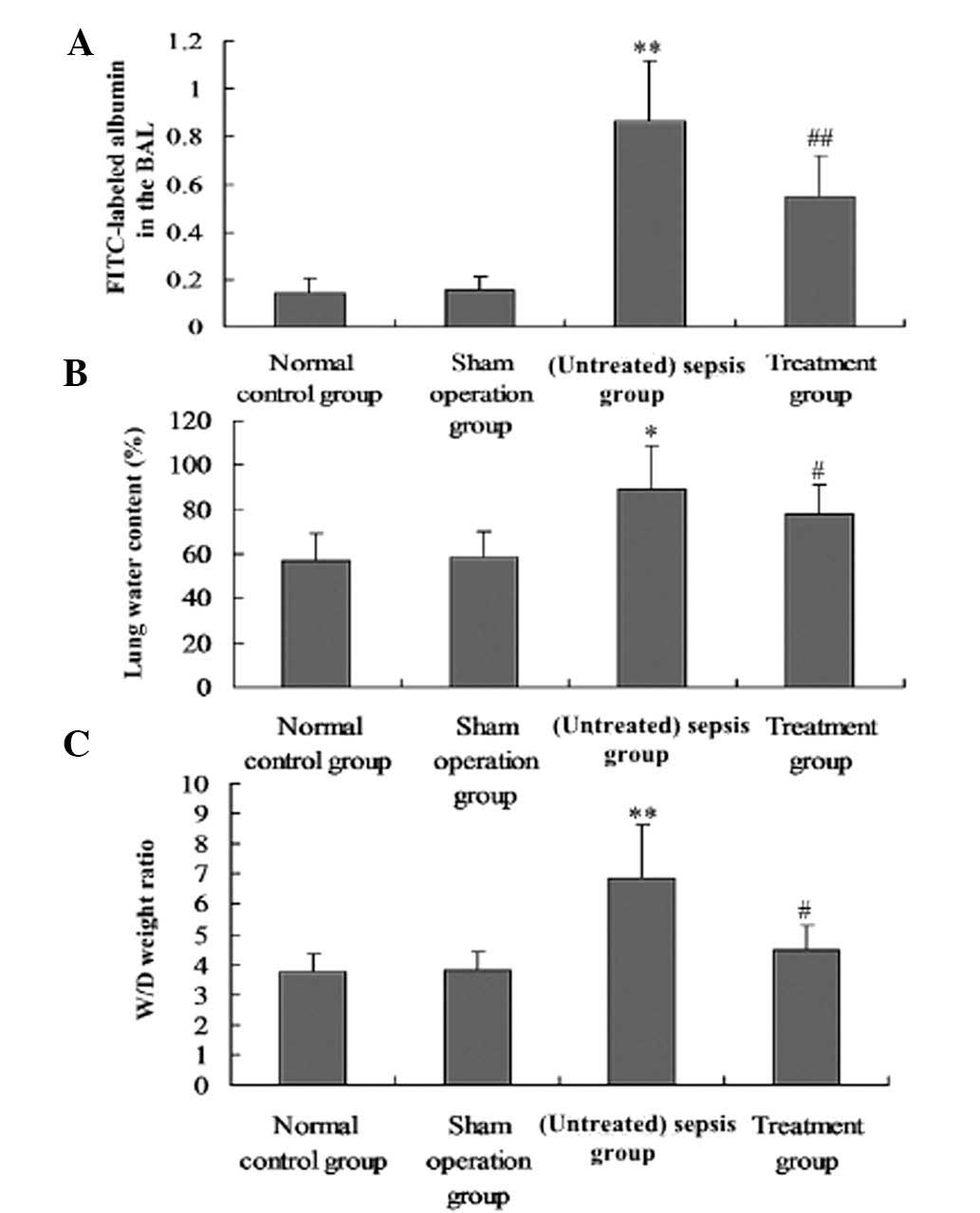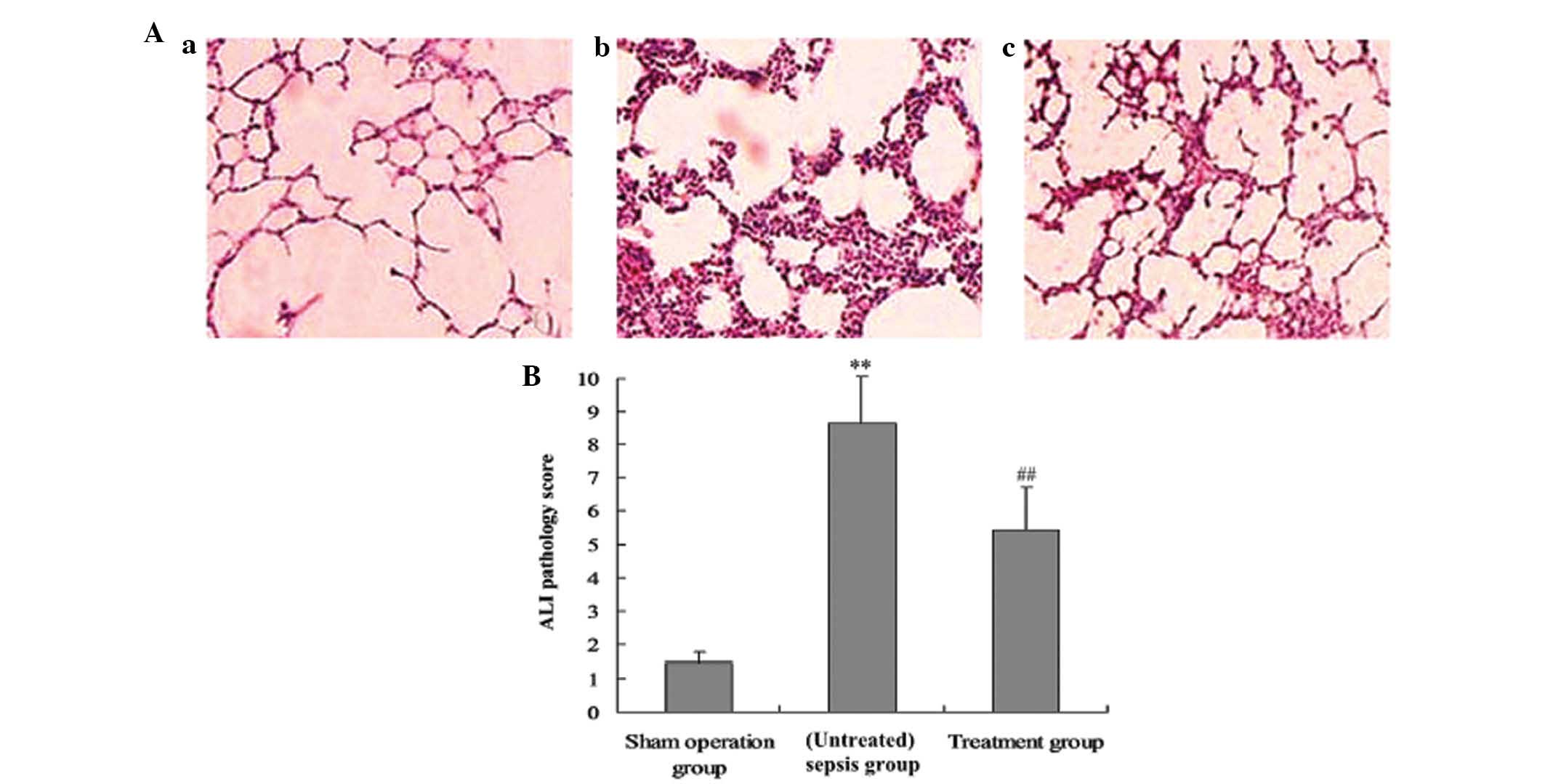|
1
|
Park SJ, Pai KS, Kim JH and Shin JI: What
dose of intravenous immunoglobulin should be administered in
Kawasaki disease with suspected systemic capillary leak syndrome?
Comment on: shock: an unusual presentation of Kawasaki disease (Eur
J Pediatr 2011 Jul; 170(7):941–3). Eur J Pediatr. 17:203–204. 2012.
View Article : Google Scholar
|
|
2
|
Zhao L, Tao JY, Zhang SL, et al: N-butanol
extract from Melilotus Suaveolens Ledeb affects pro- and
anti-inflammatory cytokines and mediators. Evid Based Complement
Alternat Med. 7:97–106. 2010. View Article : Google Scholar :
|
|
3
|
van Meurs M, Castro P, Shapiro NI, et al:
Adiponectin diminishes organ-specific microvascular endothelial
cell activation associated with sepsis. Shock. 37:392–398. 2012.
View Article : Google Scholar : PubMed/NCBI
|
|
4
|
Ueda T, Takeyama Y, Yasuda T, et al:
Vascular endothelial growth factor increases in serum and protects
against the organ injuries in severe acute pancreatitis. J Surg
Res. 134:223–230. 2006. View Article : Google Scholar : PubMed/NCBI
|
|
5
|
Mura M, dos Santos CC, Stewart D and Liu
M: Vaseular endothelial growth factor and related moleeules in
acute lung injury. J Appl Physiol 1985. 97:1605–1167. 2004.
View Article : Google Scholar
|
|
6
|
Abadie Y, Bregeon F, Papazian L, et al:
Decreased VEGF concentration in lung tissue and vascular injury
during ARDS. Eur Respir J. 25:139–146. 2005. View Article : Google Scholar : PubMed/NCBI
|
|
7
|
Földi M and Zoltán OT: Unconditioned
reflex activity in experimental lymphostatic encephalopathy and the
therapeutic action of coumarin from Melilotus officinalis.
Arzneimittel-Forschung. 20:1623–1624. 1970.
|
|
8
|
Liu MW, Su MX, Wang YH, Wei W, Qin LF, Liu
X, Tian ML and Qian CY: Effect of melilotus extract on lung injury
by upregulating the expression of cannabinoid CB2 receptors in
septic rats. BMC Complement Altern Med. 14:942014. View Article : Google Scholar : PubMed/NCBI
|
|
9
|
Sonkodi S: Decrease of spontaneous
motility in experimental lymphogenic encephallopathy and the
protective activity of coumarin from Melilotus officinalis.
Arzneimittel-Forschung. 20(Suppl 11a): 16171970.(In German).
|
|
10
|
Macias FA, Simonet AM, Galindo JCG,
Pacheco PC and Sanchez JA: Bioactive polar triterpenoids from
Melilotus messanensis. Phytochemistry. 49:709–717. 1998. View Article : Google Scholar
|
|
11
|
Szapiel SV, Elson NA, Fulmer JD,
Hunninghake GW and Crystal RG: Bleomycin-induced interstitial
pulmonary disease in the nude, athymic mouse. Am Rev Respir Dis.
120:893–899. 1979.PubMed/NCBI
|
|
12
|
Mikawa K, Nishina K, Takao Y and Obara HA:
ONO-1714, a nitric oxide synthase inhibitor, attenuates
endotoxin-induced acute lung injury in rabbits. Anesth Analg.
97:1751–1755. 2003. View Article : Google Scholar : PubMed/NCBI
|
|
13
|
Seely KA, Holthoff JH, Burns ST, et al:
Hemodynamic changes in the kidney in a pediatric rat model of
sepsis-induced acute kidney injury. Am J Physiol Renal Physiol.
301:F209–F217. 2011. View Article : Google Scholar : PubMed/NCBI
|
|
14
|
Mancuso P, Whelan J, DeMichele SJ, Snider
CC, Guszcza JA, Claycombe KJ, Smith GT, Gregory TJ and Karlstad MD:
Effects of eicosapentaenoic and gamma-linolenic acid on lung
permeability and alveolar macrophage eicosanoid synthesis in
endotoxic rats. Crit Care Med. 25:523–532. 1997. View Article : Google Scholar : PubMed/NCBI
|
|
15
|
Liu MW, Wang YH, Qian CY and Li H:
Xuebijing exerts protective effects on lung permeability leakage
and lung injury by upregulating Toll-interacting protein expression
in rats with sepsis. Int J Mol Med. 34:1492–504. 2014.PubMed/NCBI
|
|
16
|
Castanares-Zapatero D, Bouleti C, et al:
Connection between cardiac vascular permeability, myocardial edema,
and inflammation duringsepsis: role of the α1AMP-activated protein
kinase isoform. Crit Care Med. 41:e411–e422. 2013. View Article : Google Scholar : PubMed/NCBI
|
|
17
|
Fisher BJ, Kraskauskas D, Martin EJ, et
al: Mechanisms of attenuation of abdominal sepsis induced acute
lung injury by ascorbic acid. Am J Physiol Lung Cell Mol Physiol.
303:L20–L32. 2012. View Article : Google Scholar : PubMed/NCBI
|
|
18
|
Skóra J, Barć P, Pupka A, et al:
Transplantation of autologous bone marrow mononuclear cells with
VEGF gene improves diabetic critical limb ischaemia. Endokrynol
Pol. 64:129–138. 2013.PubMed/NCBI
|
|
19
|
van der Flier M, van Leeuwen HJ, van
Kessel KP, et al: Plasma vascular endothelial growth factor in
severe sepsis. Shock. 23:35–38. 2005. View Article : Google Scholar
|
|
20
|
Yano K, Liaw PC, Mullington JM, et al:
Vascular endothelial growth factor is an important determinalt of
sepsis morbidity and mortality. J Exp Med. 203:1447–1458. 2006.
View Article : Google Scholar : PubMed/NCBI
|
|
21
|
Wei J, Huang X, Zhang Z, et al: MyD88 as a
target of microRNA-203 in regulation of lipopolysaccharide or
Bacille Calmette-Guerin induced inflammatory response of macrophage
RAW264.7 cells. Mol Immunol. 55:303–309. 2013. View Article : Google Scholar : PubMed/NCBI
|
|
22
|
Huang Y, Nikolic D, Pendland S, Locklear
TD and Mahady GB: Effects of cranberry extracts and ursolic acid
derivatives on P-fimbriated Escherichia coli, COX-2 activity,
pro-inflammatory cytokine release and the NF-κB transcriptional
response in vitro. Pharm Biol. 47:18–25. 2009. View Article : Google Scholar
|
|
23
|
Ghose R, Guo T, Vallejo JG and Gandhi A:
Differential role of Toll-interleukin 1 receptor domain-containing
adaptor protein in Toll-like receptor 2-mediated regulation of gene
expression of hepatic cytokines and drug-metabolizing enzymes. Drug
Metab Dispos. 39:874–881. 2011. View Article : Google Scholar : PubMed/NCBI
|
|
24
|
Oltean S, Neal CR, Mavrou A, et al:
VEGF165b overexpression restores normal glomerular water
permeability in VEGF164-overexpressing adult mice. J Am Soc
Nephrol. 21:F1026–36. 2012.
|
|
25
|
Lucas R, Sridhar S, Rick FG, et al:
Agonist of growth hormone-releasing hormone reduces
pneumolysin-induced pulmonary permeability edema. Proc Natl Acad
Sci USA. 109:2084–2089. 2012. View Article : Google Scholar : PubMed/NCBI
|
|
26
|
Russell JA: Management of sepsis. Minerva
Med. 99:431–458. 2008.
|
|
27
|
Schick M, Isbary T, Schlegel N, et al: The
impact of crystalloid and colloid infusion on the kidney in rodent
sepsis. Intensive Care Med. 36:541–548. 2010. View Article : Google Scholar
|
|
28
|
Schlegel N, Baumer Y, Drenckhahn D and
Waschke J: Lipopolysaccharide-induced endothelial barrier
breakdownis cAMP dependent in vivo and in vitro. Crit Care Med.
37:1735–1743. 2009. View Article : Google Scholar : PubMed/NCBI
|
|
29
|
Kaphle K, Wu LS, Yang NY and Lin JH:
Herbal medicine research in Taiwan. Evid Based Complement Alternat
Med. 3:149–155. 2006. View Article : Google Scholar : PubMed/NCBI
|
|
30
|
Trouillas P, Calliste CA, Allais DP, et
al: Antioxidant, anti-inflammatory and antiproliferative properties
of sixteen water plant extracts used in the Limousin countryside as
herbal teas. Food Chemistry. 80:399–407. 2003. View Article : Google Scholar
|
|
31
|
Zhao L, Tao JY, Zhang SL, et al: Inner
anti-inflammatory mechanisms of petroleum ether extract from
Melilotus suaveolens Ledeb. Inflammation. 30:213–223. 2007.
View Article : Google Scholar : PubMed/NCBI
|
|
32
|
Gebre-Mariam T, Asres K, Getie M, et al:
In vitro availability of kaempferolglycosidesfrom cream
formulationsof methanolic extractof the leaves of Melilotus
elegans. Eur J Pharm Biopharm. 60:31–38. 2005. View Article : Google Scholar : PubMed/NCBI
|
|
33
|
Asres K, Gibbons S, Hana E and Bucar F:
Anti-inflammatory activity of extracts and a saponin isolated from
Melilotus elegans. Pharmazie. 60:310–312. 2005.PubMed/NCBI
|
|
34
|
Guo X, Pan Y, Xiao C, et al: Fractalkine
stimulates cell growth and increases its expression via NF-κB
pathway in RA-FLS. Int J Rheum Dis. 15:322–329. 2012. View Article : Google Scholar : PubMed/NCBI
|















